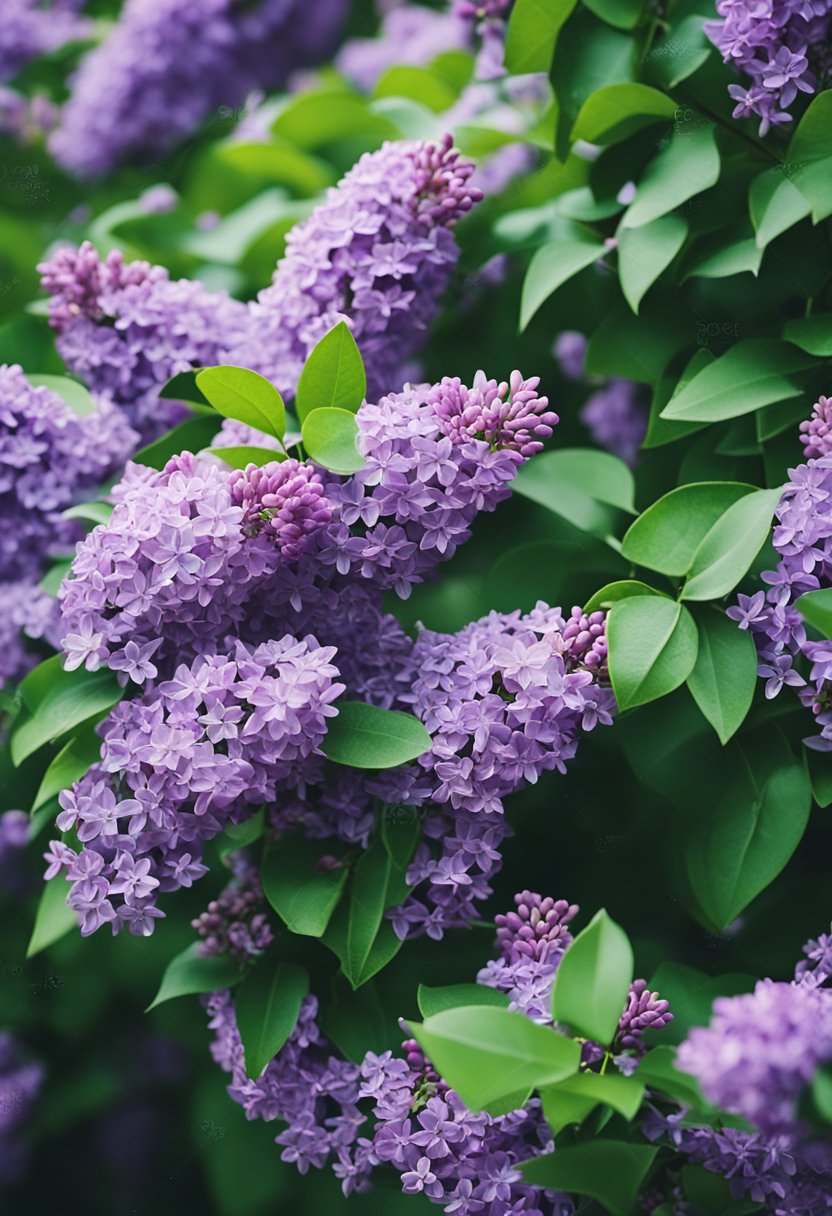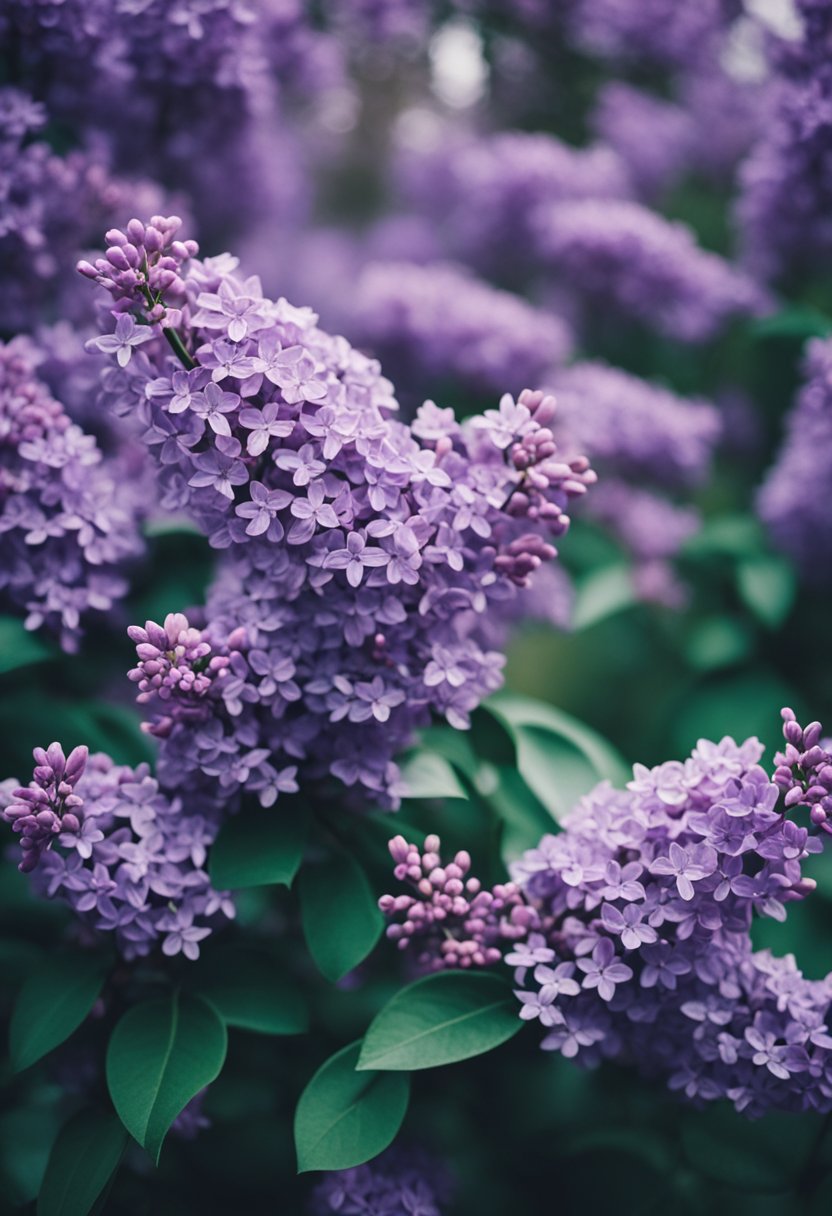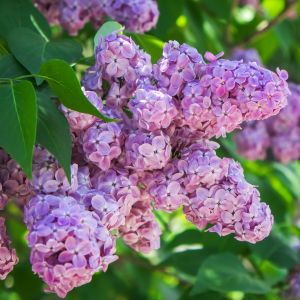Are you eagerly waiting for your lilacs to bloom but nothing seems to be happening? Lilacs are a beautiful addition to any garden and their sweet fragrance is a sure sign of spring.
This post may contain affiliate links.
However, if your lilacs are not blooming, it can be frustrating and disappointing. There are several reasons why your lilacs may not be blooming, and understanding these reasons can help you take the necessary steps to encourage blooming.
One reason why your lilacs may not be blooming is that they are not getting enough sunlight. Lilacs require at least 6 hours of direct sunlight each day to bloom. If your lilacs are planted in a shady area, they may not be getting enough sunlight to produce flowers.
Another reason could be that your lilacs are too young. Lilacs typically take 3-5 years to mature and produce flowers. If your lilacs are still young, you may need to be patient and wait a little longer for them to bloom.
Related Article: How to Grow Lilacs from Cuttings: A Beginner’s Guide
Understanding Lilac Blooms
Lilacs are a popular flowering shrub that are known for their fragrant blooms and beautiful colors. However, sometimes lilacs may not bloom as expected, leaving you wondering what went wrong.
Understanding the lilac life cycle and the different varieties of lilacs can help you identify the reasons why your lilacs are not blooming.
Related Article: Irises Not Blooming: Possible Reasons and Solutions
Lilac Life Cycle
Lilacs have a specific life cycle that affects when they bloom. In the spring, lilacs produce flower buds that will bloom the following year. These buds develop throughout the summer and fall, and then go dormant during the winter.
In the spring, the buds begin to swell and eventually burst open to reveal the beautiful lilac blooms.
If your lilacs are not blooming, it could be due to a variety of factors. One common reason is pruning at the wrong time. Lilacs should be pruned immediately after they finish blooming, as pruning at other times of the year can remove the flower buds and prevent them from blooming the following year.
Related Article: When Do Gardenias Bloom?

Varieties of Lilacs
There are many different varieties of lilacs, each with their own unique characteristics. Some lilacs bloom earlier in the spring, while others bloom later. Some varieties have purple blooms, while others have white or pink blooms.
Related Article: When Do Gardenias Bloom?
It is important to choose the right variety of lilac for your climate and growing conditions to ensure that it will bloom properly.
If you are having trouble getting your lilacs to bloom, you may want to consider planting a different variety that is better suited to your area. You can also try fertilizing your lilacs with a balanced fertilizer in the spring to promote healthy growth and blooming.
Factors Affecting Lilac Blooming
Lilacs are known for their fragrant and beautiful blooms, but sometimes they may not bloom as expected. There are several factors that can affect lilac blooming, and it is important to understand them to ensure your lilacs bloom to their full potential.

Sunlight and Shade
Lilacs require plenty of sunlight to bloom properly. If your lilacs are not getting enough sunlight, they may not bloom or may have fewer blooms. Make sure your lilacs are planted in a location that receives at least 6 hours of direct sunlight per day.
If your lilacs are planted in a shaded area, consider pruning nearby trees or shrubs to allow more sunlight to reach them.
Water and Moisture
Lilacs require consistent moisture to bloom properly. If your lilacs are not getting enough water, they may not bloom or may have fewer blooms.
Make sure your lilacs are watered deeply once a week, especially during dry spells. Avoid overwatering, as this can lead to root rot and other problems.
Soil Conditions and Fertilization
Lilacs require well-draining soil that is rich in nutrients, especially nitrogen and phosphorus. If your soil is too alkaline, your lilacs may not bloom properly.
Consider adding fertilizer to your soil in the spring to ensure your lilacs have the nutrients they need to bloom. Avoid using too much fertilizer, as this can lead to excessive foliage growth and fewer blooms.
Weather and Seasonal Changes
Lilacs are sensitive to weather and seasonal changes, and these can affect their blooming. Late freezes or cold snaps in the spring can damage buds and prevent blooming.
Warm winters can also affect blooming, as lilacs require a period of cold temperatures to bloom properly. Monitor weather conditions and protect your lilacs from extreme temperatures when necessary.
Caring for Lilacs
Lilacs are a beautiful addition to any garden, but sometimes they may not bloom as expected. Here are some tips on caring for your lilacs to ensure they bloom their best.
Pruning Techniques
Pruning is essential for the health and appearance of your lilacs. It’s important to prune your lilacs right after they bloom. This will give the plant enough time to produce new growth and set buds for the following year.
You should remove any dead or diseased wood, as well as any crossing or rubbing branches. Cut back about a third of the oldest stems to the ground to encourage rejuvenation.
Pest and Disease Control
Lilacs can be susceptible to borers, scale, and other pests. To control these pests, you can use neem oil or insecticidal soap.
If you notice any signs of disease, such as leaf spots or powdery mildew, remove the affected leaves and dispose of them in the trash. Avoid composting them as this can spread the disease.
Supporting Healthy Growth
Lilacs need plenty of water and nutrients to thrive. Water your lilacs deeply once a week during dry periods. Fertilize your lilacs in early spring with a balanced fertilizer, and use Epsom salt to provide magnesium and sulfur.
Mulch around the base of the plant to retain moisture and control weeds.
By following these tips, you can ensure that your lilacs remain healthy and bloom their best. Remember to deadhead spent blooms to redirect energy into new growth, and remove any suckers that may appear at the base of the plant.
Troubleshooting Non-Blooming Lilacs
If your lilacs are not blooming, it can be frustrating, but there are ways to troubleshoot the issue. In this section, we will cover common issues that may be preventing your lilacs from blooming, as well as strategies for rejuvenation.
Identifying Common Issues
Freeze Damage
If you live in an area where the temperature drops below freezing, your lilacs may have suffered from freeze damage. This can cause the buds to die, preventing blooming. To prevent this, cover your lilac bush with a cloth or burlap during the winter months.
Shade
Lilacs need plenty of sunlight to bloom. If your lilac bush is in a shady area, it may not be getting enough sunlight to bloom. Try moving it to a sunnier location.
Wrong Pruning
Pruning is important for the health of your lilac bush, but it’s important to prune at the right time and in the right way. If you prune at the wrong time or cut off too much, it can prevent blooming. Make sure to prune right after blooming and only remove a third of the branches.
Lack of Sunlight
Lilacs need at least six hours of sunlight a day to bloom. If your lilac bush is not getting enough sunlight, it may not bloom. Try moving it to a sunnier location.
Lilac Age
Lilacs bloom best when they are young. If your lilac bush is old, it may not bloom as much as it used to. Consider planting a new, young lilac bush.
Rejuvenation Strategies
Dormant Pruning
If your lilac bush is not blooming, it may be time for some dormant pruning. This involves removing some of the older wood to encourage new growth. Make sure to prune right after blooming and only remove a third of the branches.
Air Circulation
Good air circulation is important for the health of your lilac bush. If your lilac bush is in a crowded area, it may not be getting enough air circulation. Consider pruning some of the surrounding plants to improve air flow.
Full Sun
Lilacs need plenty of sunlight to bloom. If your lilac bush is in a shady area, it may not be getting enough sunlight to bloom. Try moving it to a sunnier location.
Younger Wood
Lilacs bloom on last year’s growth, so if you have been pruning too much, you may be cutting off the wood that will bloom. Make sure to only remove a third of the branches when pruning.
Neglected
If your lilac bush has been neglected, it may not bloom as much as it used to. Make sure to fertilize and water your lilac bush regularly to keep it healthy.
By identifying common issues and using rejuvenation strategies, you can help your lilac bush bloom again.
Enhancing Lilac Beauty and Fragrance
If your lilacs are not blooming as expected, there are steps you can take to optimize their bloom quality and enhance their beauty and fragrance. Here are a few tips to help you get the most out of your lilacs:
Optimizing Bloom Quality
To encourage your lilacs to produce the fullest, most fragrant blooms, you need to provide them with the right nutrients. Lilacs thrive in full sun, so make sure they are planted in a location that receives at least six hours of direct sunlight each day.
You can also add bone meal or a phosphorous-rich fertilizer to the soil around the base of your lilacs to help promote flowering.
Another way to encourage your lilacs to bloom is to prune them regularly. Remove any dead or damaged wood, as well as any branches that are crossing or rubbing against each other. This will help to improve the overall health of your lilacs and encourage them to produce more buds.
Creating an Ideal Environment
In addition to providing your lilacs with the right nutrients and pruning them regularly, you also need to create an ideal environment for them to thrive. Lilacs prefer well-drained soil, so make sure your soil is not too compacted or waterlogged.
If you are planting your lilacs in a container, make sure the container has drainage holes to allow excess water to escape.
You can also use plant food or lawn fertilizers to help encourage foliage growth and support your lilacs’ overall health. Just be careful not to over-fertilize, as this can lead to excessive foliage growth and fewer blooms.
Finally, pay attention to your lilacs’ environment. They prefer a cool, moist climate, so make sure they are not planted in an area that gets too hot or dry. If you live in a hot, dry climate, you may need to water your lilacs more frequently to keep them healthy.
By nurturing your lilacs and providing them with the right nutrients and environment, you can help them produce beautiful, fragrant blooms year after year.
Frequently Asked Questions
How can I encourage my lilac bushes to bloom?
There are several ways to encourage lilac blooms. First, make sure your lilac bush is getting enough sunlight. Lilacs need at least six hours of direct sunlight per day to bloom. Second, ensure that the soil is well-drained and has a pH level between 6.0 and 7.0.
Third, avoid over-fertilizing as this can lead to excessive foliage growth at the expense of blooms. Finally, prune your lilac bush after it blooms to remove dead wood and shape the plant.
What could be preventing my lilacs from blooming?
There are several factors that could be preventing your lilacs from blooming. The most common reasons include insufficient sunlight, improper soil pH, over-fertilization, and pruning at the wrong time.
Other factors such as pests, disease, and extreme weather conditions can also affect lilac blooming.
How long should I expect to wait for a new lilac bush to flower?
Lilacs typically take 2-5 years to bloom after planting. However, this can vary depending on the age and size of the plant, as well as environmental factors such as sunlight and soil conditions.
Can pruning affect the blooming of my lilac bush?
Yes, pruning can affect the blooming of your lilac bush. Prune your lilac bush after it blooms to remove dead wood and shape the plant. Avoid pruning in the fall or winter as this can remove flower buds and reduce blooming.
Are there specific soil conditions that affect lilac blooming?
Yes, soil conditions can affect lilac blooming. Lilacs prefer well-drained soil with a pH level between 6.0 and 7.0. If the soil is too acidic or alkaline, it can affect the plant’s ability to absorb nutrients and produce blooms.
What is the difference between lilac flower buds and leaf buds?
Lilac flower buds are larger and rounder than leaf buds. They also have a reddish tint and are located at the tips of branches. Leaf buds, on the other hand, are smaller and more elongated. They are located along the branches and produce leaves rather than flowers.
Follow my lilacs board on Pinterest.



